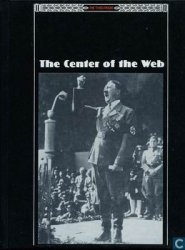In the post-World War II years, communism, the system of government in which property and the means of production are owned by a community instead of individuals, created tensions between the United States and the Soviet Union, leading to the cold war.
In the early 19th century, the idea of a communist society arose in response to the plight of the poor and the dislocated at the dawn of modern capitalism. Many communist experiments resulted in communal living societies based on utopian ideals of a classless, propertyless citizenry. Later, communism was associated with the philosophy advanced by German writers Karl Marx and Friedrich Engels, who contended that in order for a true communist society to form, a revolution of the proletariat, or working class, had to take place. Marx and Engels predicted in their Communist Manifesto (1848) that revolutions would succeed first in industrialized countries such as France, England, and Germany, but the first successful communist revolution occurred in Russia in November 1917.
Soviet leader Vladimir Ilych Lenin’s vision of a communist world order, led by workers, conflicted sharply with Woodrow Wilson’s dream of an anti-imperialist, free-trade, capitalist world. Wilson sent American troops into Russia in 1919 to attempt to defeat the Bolsheviks—Russian revolutionaries—and create a moderate republic. When he failed to turn the tide of rebellion, Wilson refused to formally recognize the newly formed Soviet Union as a legitimate government. Not until 1933 did Franklin D. Roosevelt acknowledge the communist government. By that time, many Americans, disillusioned with the failing capitalist system during the Great Depression, were attracted to communism as an alternative system of government. Throughout the 1930s, a number of Americans joined the Communist Party, a decision that haunted many later in life.
Since 1917, the term “communism” has informally come to connote a system of government that accepts the Russian Revolution as a model for all Marxists to follow. The communist state in Russia, first established by Vladimir Ilych Lenin, continued after his death under the leadership of Joseph Stalin. Under Stalin, communism moved even further toward totalitarianism. Several million Russians died during the forced collectivization of the Russian peasantry, the elimination of the kulaks (rich peasants), and purges against political enemies. Then the United States joined the Soviet Union and Great Britain in World War II, in what became a difficult but effective alliance to defeat Nazi Germany, at the cost of 20 million Soviet lives. In the aftermath of the war, most Americans associated communism with its Stalinist version and defined it as a totalitarian, godless, imperialist conspiracy directed by Moscow, which led to anticommunism that culminated in the second “Red Scare” in the early 1950s.
The relationship of the Soviet Union with the rest of the world was consistently troubling to the United States. To Americans, a communist government, wherever it existed, always appeared as a threat. Following World War II, the fear of communist infiltration of the U. S. government prompted officials to take measures to ferret out suspected communist infiltrators. The House Un-American Activities Committee (HUAC), a government agency created to investigate individuals suspected of conducting un-American or subversive actions, led the battle against communism in labor, government, and the arts.
No group was excluded from accusations of communist ties. In 1947, HUAC turned its attention to Hollywood, where the committee, in the hope of uncovering communists, interrogated actors, writers, and directors. A select group of writers and directors, known as the Hollywood Ten, chose to stand up for their rights and refused to answer questions about any affiliation with the Communist Party. The following year, HUAC focused on Alger Hiss, a former State Department employee, who was suspected of being a secret Soviet agent. Hiss was found guilty of perjury and sentenced to prison. By 1950, Julius and Ethel Rosenberg were accused of selling secrets regarding the atomic bomb to the Soviets. They were convicted and executed. Many feared that communists had made their way into the highest branches of the federal government and attempts to reveal those employees with communist ties were stepped up.
In the 1950s, Wisconsin senator Joseph R. McCarthy, convinced that communists had indeed penetrated U. S. government agencies, used heavy-handed tactics and panic-inducing accusations to pursue government employees suspected of communist affiliation. “McCarthyism” raised the omnipresent fear of communism across the country. Radio and television performers, teachers, college professors, and civil-rights activists faced charges of disloyalty. Congress launched its own loyalty probe, enacting the Internal Security Act (1950) over Harry S. Truman’s veto. The measure declared that it was illegal to conspire to act in a way that would contribute to establishing a totalitarian dictatorship in America and required members of communist organizations to register with the office of the Attorney General. Intent on rooting out subversion, Congress helped contribute to the feeling held by many Americans that communists constituted an unseen threat to the stability of the nation.
The climate of suspicion and ideological conformity pervaded the nation throughout the 1950s and into the 1960s, and it led to the continued opposition to communist advances around the world. When communist forces from North Korea crossed the 38th parallel and invaded South Korea in 1950, Truman sent troops to defend the American-supported government of South Korea as the Korean War unfolded. Implementing diplomat George F. Kennan’s proposed policy of containment, Truman strove to stop the spread of communism into new areas. The commitment to stopping the spread of communism led to massive involvement in Vietnam. Led by communist revolutionary Ho Chi Minh, a nationalist movement sought to take control of the American-backed government of South Vietnam headed by Ngo Dinh Diem. The ensuing struggle in the Vietnam War tore the United States apart, wrought enormous damage in Southeast Asia, and forced a reevaluation of America’s cold war policies.
Further reading: Franyois Fure, The Passing of an Illusion: The Idea of Communism in the Twentieth Century (Chicago: University of Chicago Press, 1995).
—Philippe R. Girard




 World History
World History









